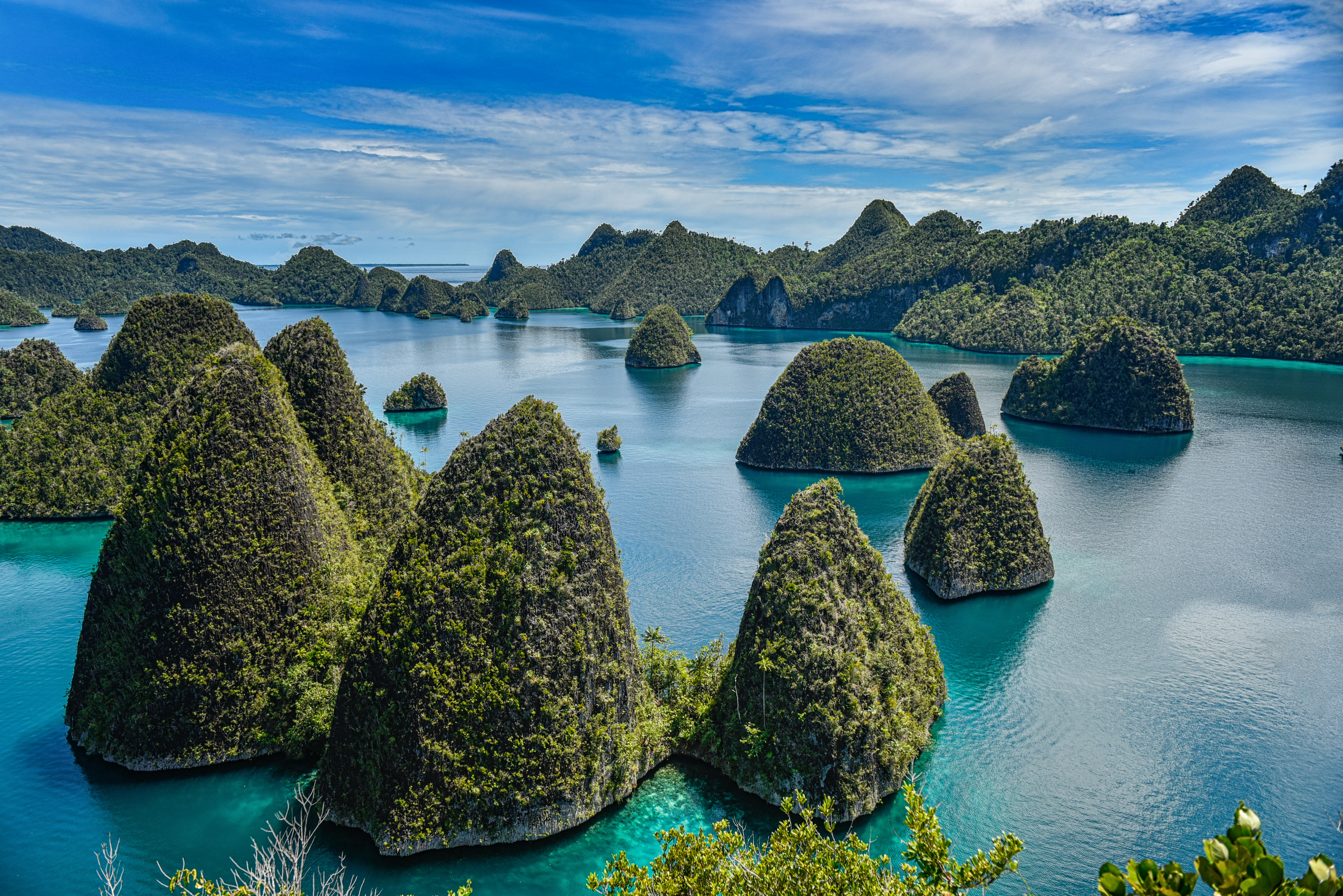Raja Ampat is an archipelago in Indonesia known for its breathtaking natural beauty and biodiversity. Located in the northwest of Papua, it comprises over 1,500 small islands, cays, and shoals surrounding the four main islands of Misool, Salawati, Batanta, and Waigeo. The area is a prime site for ecotourism and marine activities, offering pristine coral reefs and a vast array of marine life, including over 1,500 species of fish and 600 species of coral, making it one of the most biodiverse marine habitats on Earth.
Historically, Raja Ampat was part of the Sultanate of Tidore, and it holds significant cultural importance for the indigenous communities, such as the Papuan tribes, who have inhabited the islands for generations. Their culture and traditional practices play an essential role in maintaining the ecological balance and preserving the area's pristine condition.
Geographically, Raja Ampat is located at the heart of the Coral Triangle, an area considered the global center of marine biodiversity. The climate is tropical, characterized by a rainy season from May to September and a drier season from October to April, making it an ideal year-round destination for diving and snorkeling.
Notable landmarks in Raja Ampat include the Pianemo Island viewpoint, which offers stunning vistas of the archipelago's karst islands, and the Pasir Timbul sandbank, which emerges only during low tide. The Wayag Islands are celebrated for their picturesque beauty, featuring dramatic limestone formations against clear blue waters.
A unique feature of Raja Ampat is its extraordinary marine biodiversity, which has become a focal point for scientific research and conservation efforts. The area's remote and unspoiled environment makes it a haven for ecologists studying reef ecosystems and marine life.
One of the famous events in Raja Ampat is the Raja Ampat Marine Festival, which celebrates the region's vibrant marine culture with traditional performances, culinary fairs, and various water sports competitions, aimed at promoting sustainable tourism and conservation awareness.
Interesting fact: The name 'Raja Ampat' translates to 'Four Kings,' a reference to the four main islands that make up the archipelago. According to local mythology, these islands were the offspring of dragon eggs hatched by a woman, a story that reflects the cultural richness and heritage of the region.
 Rolandandika
, CC BY-SA 4.0, via Wikimedia Commons
Rolandandika
, CC BY-SA 4.0, via Wikimedia CommonsIndonesiaAsia
Nearby Places
Log in to write a review.
Sustainable Travel Tips
Plan Mindfully
- Choose direct flights when possible
- Travel during off-peak seasons
- Pack light and bring reusables
- Prefer eco-friendly accommodations
At Your Destination
- Use public transport or walk
- Support local businesses
- Respect wildlife and habitats
- Choose activities with minimal impact
Daily Habits
- Reuse hotel towels
- Take shorter showers
- Turn off lights/AC when out
- Carry a reusable water bottle
